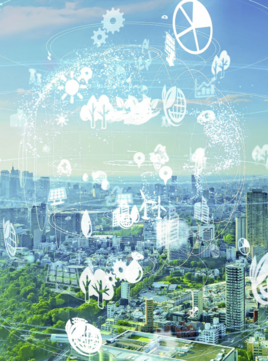2050 Version 1: After a period, the railway recovers to regain the trajectory of traffic growth projected before the pandemic occurred.
This may take two years, five or ten. But if this happens, in 2050 we would be dealing with a railway handling the demands on which the original Transport Decarbonisation Plan assumptions are based. It will be a railway designed to meet peak morning and evening commuter flows, but which is not optimally utilised the rest of the operating day.
Depending on how this is estimated, this means that overall utilisation of passenger trains may be less than 40% (as is the case now), while peak loading on busy lines will continue to place major stresses on the travelling passengers and the rail operating system.
We will have a fantastic asset that is now running all (or almost all) passenger services without recourse to diesel or any other fossil fuel.
We will have completed or nearly completed all the electrification envisaged as possible in the Traction Decarbonisation Network Strategy, but we know that we have not yet been able to fulfil the vision set out in the Transport Decarbonisation Plan of rail being part of the natural first choice travel option as part of “a convenient, cost-effective and coherent public transport network”.
We will not be running the most sustainable railway possible, as we will still be carrying around too much air in vehicles rather than maximising the fixed assets inherent in our infrastructure.
We will have largely fulfilled the decarbonisation challenge, but perhaps have still to get fully to grips with the operational efficiency challenge at a system level.
2050 Version 2: The alternative is a rail system that is much less ‘peaky’ in its passenger usage, driven by a realisation that not all work has to be done face to face.
There are times when personal contact and interaction is critical and people need to travel to work, but there is also a recognition that some tasks and jobs do not need a person to travel to a central location. They can work from home or from a local workplace, thus staying in much closer ongoing contact with the places in which they live, their core communities and recreational spaces.
Or maybe the occasions needing face-to-face interaction are concentrated into two or three days, with the remainder of the time spent more remotely.
This railway does not have to be planned, resourced and managed to cope with the absolute peaks of our first vision for 2050, where we know that for the rest of the operating day it is running at much less than capacity.
This version instead reflects the way we live and work, as part of a national transport system led by public transport built and operating to serve the decentralisation of workspaces, outside the heavy concentrations in major urban areas that drive our peak demand flows.
Integral to the way that we make our travel choices is a change in a fundamental question, from “What time do I need to be in the office every day?” to “Do I need to make this journey? And if I do, do I need then to be in the office the rest of the day?”
This second version offers the potential for a much more efficient use of an expensive sunk investment in rail infrastructure.
It removes waste from the system by not creating the demand in the first instance, as well as using the system much more efficiently when it is being used. It also presents the potential for increased equity of access between passenger and freight.
This demands a fundamental rethink of our relationship with work, living and leisure spaces - most of which is outside the direct control of the railway.
In both cases, we can see the prospect of a railway that has adapted between now and 2050 to embrace technological change in traction options and associated infrastructure.
It has accepted the challenge laid down in 2018 to target carbon emissions in all areas of its activity, as well as in its supply chains.
It has embraced the green energy revolution by innovating the use of renewable energy generation on rail land, by making trains more energy-efficient and by improving building energy performance.
It is using the available capacity on a network where all intensively used lines are electrified and where hydrogen, battery and possibly other forms of low-carbon traction are deployed.
It has found ways to accommodate difficult to decarbonise freight transport - in some cases by prioritising freight on certain routes at certain times, and in other cases by the use of electric bi-modes where the alternative traction option is adequate for running on non-electrified track. It may be that some forms of liquid fuel are still in use, but dual fuelling has been effectively introduced to maximise the decarbonisation of trains in use.
In both cases, we can also see that the railway has not focused on carbon to the detriment of other factors that improve the quality of life for people, wildlife and the natural environment.
We have taken into account the social value of decarbonisation, the intimate relationship of carbon management and air quality on the railway, and the way that the railway is carbon-efficient not only in its own right, but also as part of end-to-end journeys for commuting, business and leisure.
2020 was the first year of a decade to the crucial 2030 deadline identified by the Inter-governmental Panel on Climate Change (IPCC). This is ‘the decade to make a difference’: humanity must press ahead with efforts to decarbonise and it is fantastic to be supporting rail in pursuit of sustainability.
We look forward to working with leaders from across the sector to deliver a net-zero railway.
- For more information about any of the subjects raised in this article, please email: sustainablerailprogramme@rssb.co.uk












